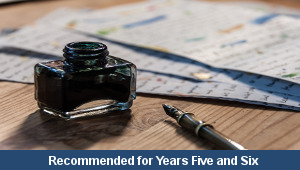Lesson Four – Story Endings

This English teaching pack for Key Stage Two gets the children to model how to rewrite the ending to a traditional tale writing in the first person from the viewpoint of one of the characters in the narrative story.
The class can identify and explain some of the rules that authors can follow when writing the narrative for a traditional story to sequence events and indicate character behaviour and actions.
Download this teaching pack including a lesson plan, classroom activities and an interactive presentation to model how to rewrite the ending to a traditional tale writing in the first person from the viewpoint of one of the characters in the narrative story
Activities in this teaching pack include a differentiated set of templates to rewrite and storyboard the ending to a traditional tale writing in the first person from the viewpoint of a character to indicate the sequence of events and character thoughts and actions.
The interactive presentation gets the children to explore how to rewrite the ending to a traditional tale writing in the first person from the viewpoint of a character.
This lesson is part of an English scheme of work to get the children to read and adapt a traditional tale changing characters and settings, investigate word families and use inverted commas to punctuate direct speech. There are teaching activities for shared learning, differentiated worksheets to support independent learning and interactive presentations to introduce concepts and key skills.
-

Maths Arithmetic Assessment
Assess abilities in solving arithmetic number problems for addition, subtraction, multiplication and division when working with informal and formal written calculations
-

Environment
Identify and describe some of the special landscapes and locations that can be found in the world and reflect on how they can be protected and preserved for the future
-

Silent Letter Words
Explore and illustrate the meanings and spellings of some different words with silent letters when using them in a range of topics and scenarios
-

Complaint Letters
Explain and model how to format and structure writing when composing letters of complaint about different issues and scenarios
